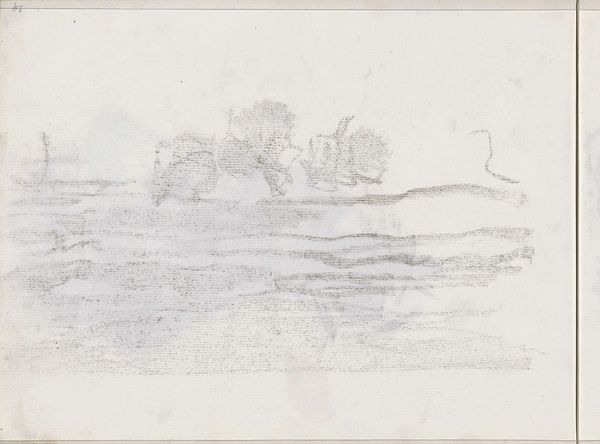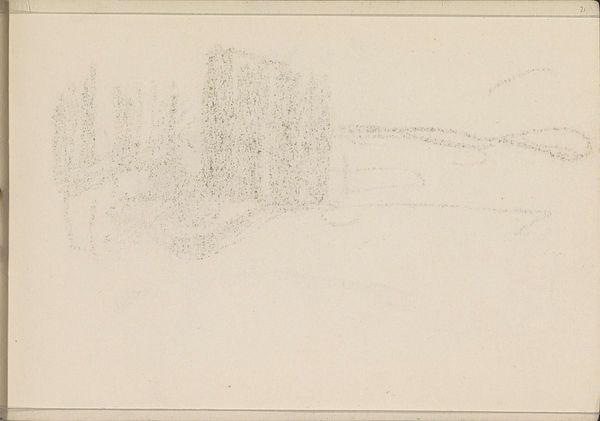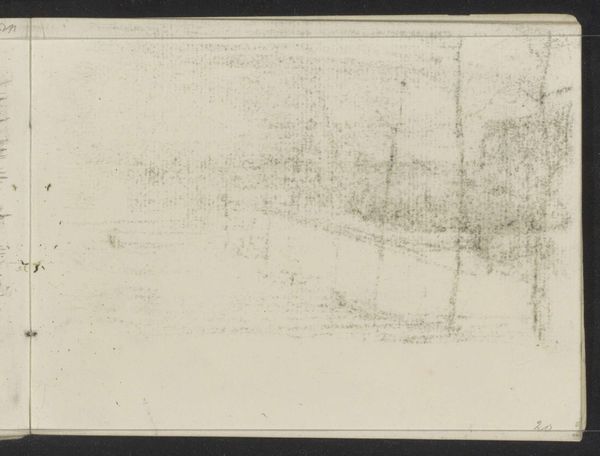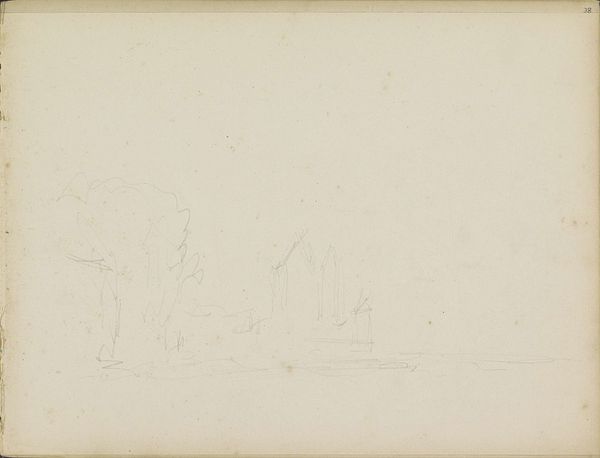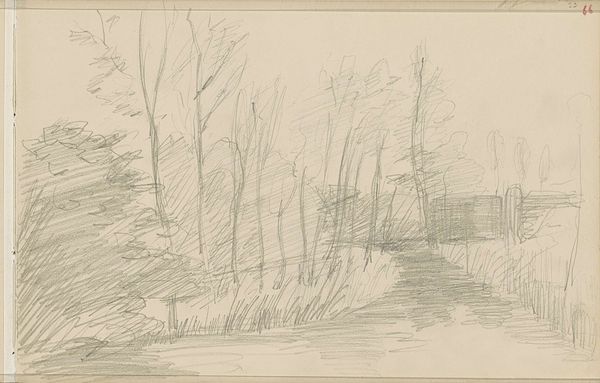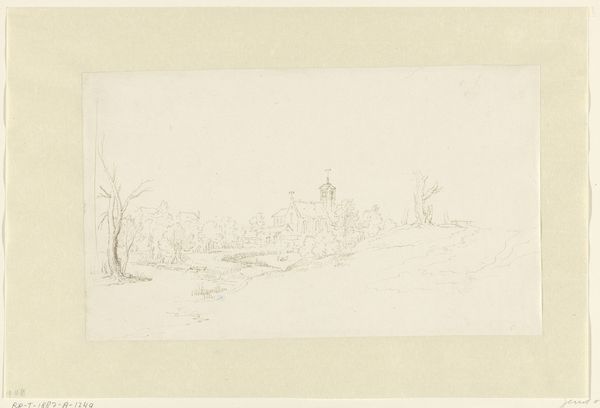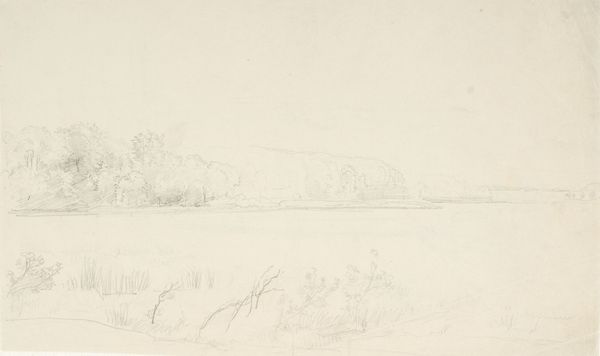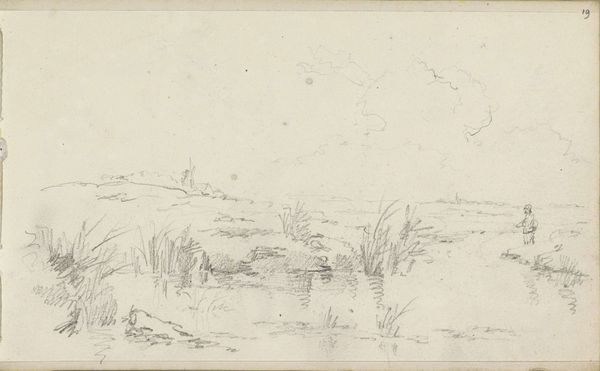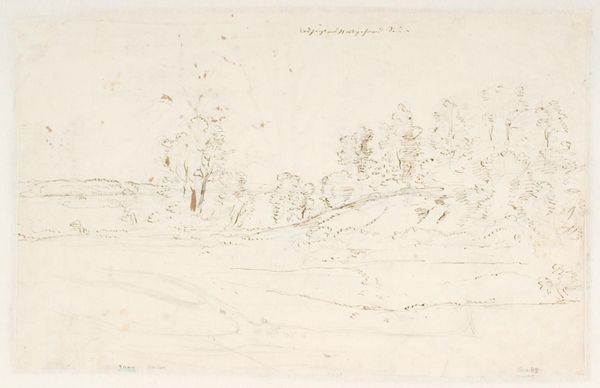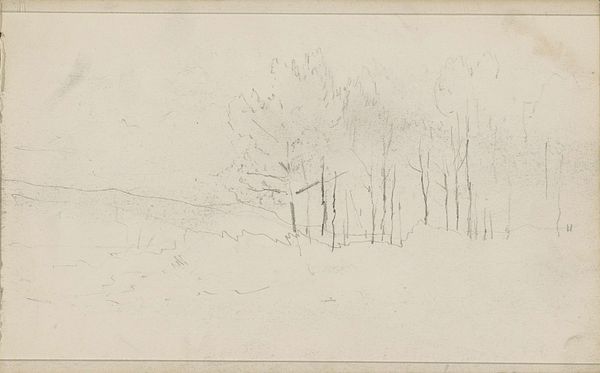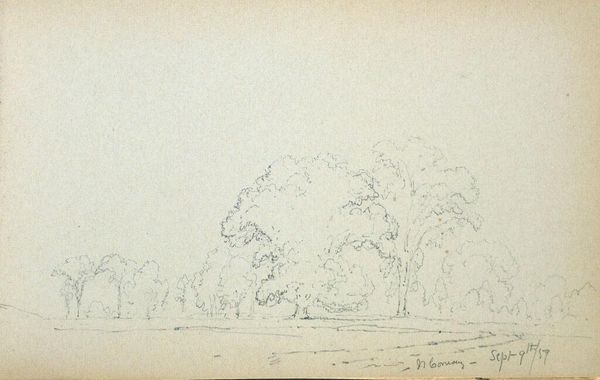
drawing, paper, pencil
#
drawing
#
pencil sketch
#
landscape
#
etching
#
paper
#
pencil
#
realism
Copyright: Rijks Museum: Open Domain
Editor: We’re looking at "Landschappen met water," Landscapes with Water, a pencil drawing on paper made by Petrus Johannes Schotel between 1841 and 1865. It's quite faint and subtle. The twin images feel unfinished, ghost-like. What strikes you when you look at this piece? Curator: The apparent simplicity is deceiving. Schotel has captured a sense of the Dutch landscape that speaks volumes about its cultural and economic life. The water... is it a river, a canal, the sea? It’s a crucial artery. It connects communities, enables trade, it's life. The reflections in the water seem to imply more than what they show on the surface, they seem like a ghostly impression of the passing of time. What does the almost monochromatic scale mean to you, here? Editor: I suppose it could be a practical choice because it's a sketch, but the greyscale really makes you focus on the shapes and composition, giving the drawing this feeling of longing. There’s a definite starkness in its realism. Do you think the drawing carries an inherent symbolism related to the cultural landscape of the Netherlands? Curator: Absolutely. Water in Dutch art is rarely just water. It represents a constant negotiation between the Dutch people and their environment, a continuous battle against the sea, and also a profound connection to global trade routes and their colonialist economy. Think of the Golden Age, how much depended on the sea, not only from fishing but transport and cultural dissemination... This very much feels to me as an almost nostalgic rendering of this national obsession. And there is also the almost haunting repetition; the way memory often doubles or distorts in the mind’s eye. What would you say it represents today? Editor: It makes me think about climate change, to be honest, and how the relationship with water is increasingly precarious, even threatening. Curator: Yes, it serves as a poignant reminder. A symbol of both prosperity and potential peril, resonating deeply across time. Editor: I see what you mean. It's not just a pretty picture; it is a meditation on national identity and an understanding of a fraught relationship with nature and prosperity.
Comments
No comments
Be the first to comment and join the conversation on the ultimate creative platform.
